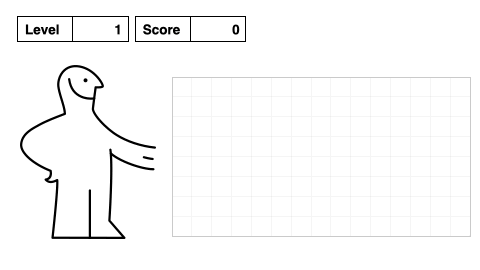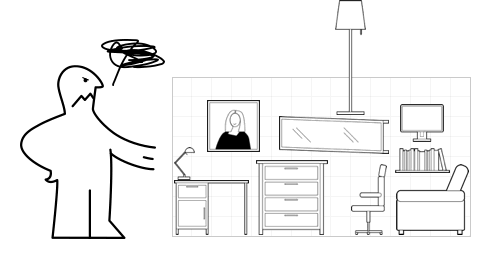
01/01/2021 - 08/01/2021
StoryTech
Project StoryTech is a collection of internal videos that showcase cutting-edge technology through compelling storytelling. The videos aim to demystify technical jargon and inspire Ford's development department to embrace the innovations.
The project was highly successful, with clients expressing their satisfaction and the videos being shared with Ford's CTO, Doug Field, highlighting the effectiveness of our narrative approach in communicating complex concepts.
Client: Ford Motor Company
Team: K_O Studio
My Role: Storyteller
Outcomes:
-
Narrative videos
-
Storyboarding template

Background
Ford's Edge Software Research (ESR) department is focused on developing cutting-edge technologies to enhance the user experience for Ford customers and development efficiency within the company. However, due to its experimental nature, ESR projects may not always be known or fully understood by other technology departments within the company. For example, one of their projects enables a geo-fenced scent experience in vehicles. To solve this problem, ESR's director enlisted the design expertise of our in-house team, K_O Studio, to create clear and informative videos.
K_O Studio, known as Kinetic Optimism Studio and headed by Executive Director Wojtek, is an experience innovation studio dedicated to unlocking the potential of products to achieve novel, meaningful, and experiential narratives.
The client believed that a carefully crafted video would effectively communicate the project goals, the underlying technology, and the business value these innovations would bring to Ford. Since the video would be distributed to the target audience via email, it needed to be very easy to understand without any additional explanation or context to ensure recipients could quickly grasp the content and understand its importance.


Problem Statement
As the intended audience for these narrative videos may not have a technical background, or if they do, it might not be related to ESR research, it's essential to present the complex technology in a clear and easily understandable manner. In this context, I use myself - a designer with some programming experience and a keen interest in technology - as a benchmark for the target audience. If I can comprehend the content, it should be accessible and comprehensible for them as well.
Upon receiving the client brief, I identified two main challenges for this project:
-
Using an excess of technical jargon to explain a challenging and unfamiliar technological issue could make the audience feel as if they're preparing for an exam.
-
Narrating about the technology itself can be too abstract, making it difficult for the audience to imagine the technology's target users, specific application scenarios, the impact it brings to users, and the subsequent commercial value.

Methodology
To solve the above problem, I think a feasible design solution is to use an analogy to tell a story.
First of all, analogy The human cognitive process abstracts and conceptualizes the reality around them, and the boundaries of these abstract concepts are fuzzy and fluid. As a result, humans have the ability to develop a counterfactual hypothesis and can easily reason through certain similarities between two different things and reason out other possible commonalities between them. Complex technical concepts can be easily explained if an analogy can be made between an unfamiliar concept and one that is very familiar and well understood by everyone.
Then there are stories. As social animals, humans are more sensitive to stories. The natural immersion of a story makes the listener more interested, more likely to pay attention, and empathize with the story as it ebbs and flows. Stories can also provide just the right amount of detail and allow the audience to imagine the application scenarios and future benefits of the technology through in-depth explanations.
Storytelling Framework
Therefore, here I borrow the story template mentioned by Mr. Rongzhe Xu in his book, Storytelling Lessons, namely Goal, Obstacle, Effort, and Result:
The Goal
What the protagonist wants to achieve.
The Obstacles
The difficulties the protagonist encountered.
The Effort
What the protagonist did to overcome the obstacles
The Results
What the protagonist finally gained.
Outcome
Video
One of the videos delves into Ford's adoption of Kubernetes, using the metaphor of shopping at IKEA for furniture. Putting the storytelling in the framework, it's shown as below:
The Goal
Finding the right app for customers' needs that enhances their experience and provides seamless connectivity (like choosing the perfect furniture at IKEA)
The Obstacles
No universal principles for HMI app development, leading to potential difficulties (similar to navigating IKEA's maze-like layout)
The Effort
Kubernetes acts as a guardian angel, managing everything for customers (providing a seamless experience like assembling IKEA furniture)
The Results
Managing apps becomes simple and enjoyable, transforming the experience like stepping into a newly furnished room after assembling IKEA furniture
By juxtaposing customers' experiences with and without Kubernetes, the video effectively conveys the stark contrast in ease and efficiency, allowing the audience to readily grasp the immense business value that this technology brings to the table, with a sense of humor of course ;) Actually I had the honor to voiceover the video simply because our client just enjoyed my way of presenting.



Storytelling Template
In addition to video, I have developed a storytelling template that has been used for other narrative and non-narrative projects within the company. For example, in the Wander Wheels project for a self-driving route planning service, this model was used to design the story line for the desirability test prototype. In another project, Energy Services, we also used the model to design a story line for a research stimuli.









